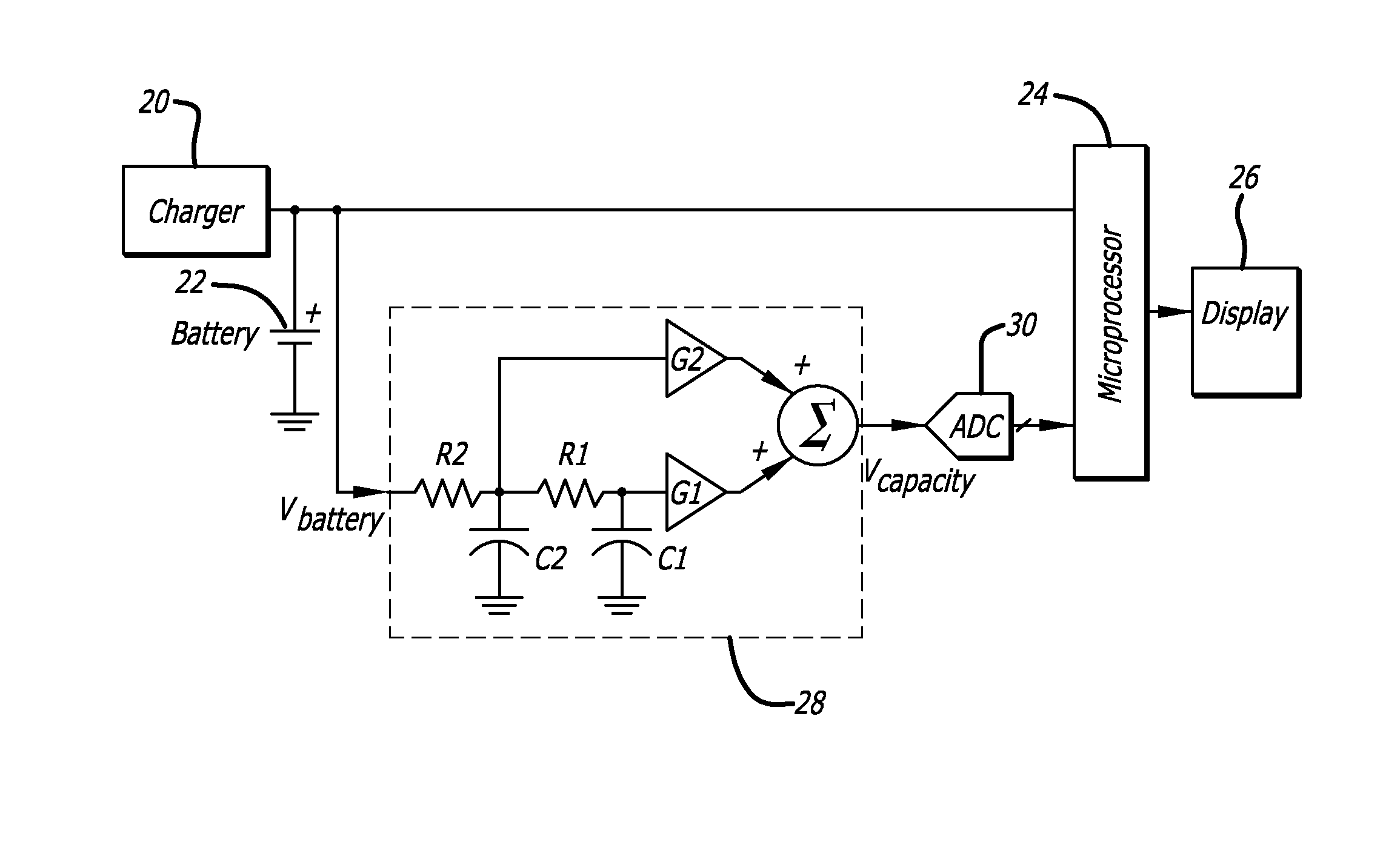Enhanced voltage-based fuel gauges and methods
a fuel gauge and voltage-based technology, applied in secondary cell servicing/maintenance, cell components, instruments, etc., can solve the problems of loss of battery voltage and power available, unsatisfactory characteristics, and the output of any battery at any time is subject to accumulation of integration errors
- Summary
- Abstract
- Description
- Claims
- Application Information
AI Technical Summary
Problems solved by technology
Method used
Image
Examples
Embodiment Construction
[0022]Certain preferred embodiments of the present invention do not use a current sense resistor, but instead are preferably effectively connected directly across the battery terminals, typically by being connected directly across circuit connections which themselves connect directly to the battery terminals when the battery is in the battery operated device. Such devices shall be referred to herein as voltage-based fuel gauges or voltage-based battery fuel gauges. In other preferred embodiments, a voltage-based fuel gauge and a coulomb counter are combined in a fuel gauge to take advantage of the desirable characteristics of each for improved performance compared to that realizable with either individually. As shall be subsequently discussed, the connection of the battery fuel gauge may be before or after the on / off switch for the device so as to either be constantly powered or powered only when the device itself is powered. In one preferred embodiment, the battery fuel gauge is al...
PUM
 Login to View More
Login to View More Abstract
Description
Claims
Application Information
 Login to View More
Login to View More - R&D Engineer
- R&D Manager
- IP Professional
- Industry Leading Data Capabilities
- Powerful AI technology
- Patent DNA Extraction
Browse by: Latest US Patents, China's latest patents, Technical Efficacy Thesaurus, Application Domain, Technology Topic, Popular Technical Reports.
© 2024 PatSnap. All rights reserved.Legal|Privacy policy|Modern Slavery Act Transparency Statement|Sitemap|About US| Contact US: help@patsnap.com










